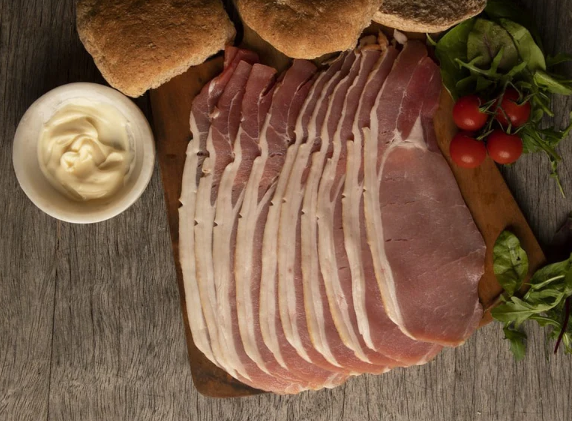Crispy, savoury, and widely beloved, bacon is arguably one of the most satisfying foods. But with so many ways to cook it, which method delivers the best results?
A spokesperson from online butchers, Campbells Prime Meat shares why he doesn’t cook bacon in the airfryer:
“When using an air fryer, exercise caution,” he notes, “as bacon contains high levels of fat, which can lead to smoking or even flames in certain air fryer models. To prevent this, you can work in smaller batches and ensure to drain the grease regularly during cooking in an airfryer.”
He adds, “However, this process can be inconvenient as it requires frequent monitoring and interruption, making other cooking methods like pan frying or oven baking more practical and hassle-free alternatives for cooking bacon.”
Skillcast have outlined the different cooking methods and their respective outcomes, as well as warning signs your bacon isn’t cooked properly:
1. Pan Frying
Pan frying is a tried-and-tested method for cooking bacon. Utilise a frying pan over medium heat and cook until it reaches your preferred level of crispness, turning occasionally.
Pan frying yields bacon with a slightly soft texture in the middle and a crispy exterior. Cooking bacon with this method tends to give it a richer flavour due to the direct contact with the frying pan and the caramelisation process.
Pan frying is a versatile method that allows for easy customisation of crispiness levels based on personal preference.
2. Oven Cooking
Cooking bacon in the oven is another favoured technique. Arrange bacon strips on a baking tray lined with baking parchment and bake at 200°C for 15-20 minutes, or until crispy.
Oven-cooked bacon tends to have a consistently crispy texture throughout, with a slight chewiness in the centre. It produces flat, evenly cooked strips of bacon due to the less direct heat distribution in the oven.
The oven allows for hands-off cooking, making it convenient for preparing larger batches of bacon at once.
3. BBQing
BBQing bacon adds a smoky char and unique flavour. Preheat your grill to medium-high heat and place bacon directly on the grill grates. Cook for 5-7 minutes, flipping once, until crispy and slightly charred.
When cooked on a grill, bacon develops a tender yet juicy consistency throughout, while achieving a charred and crispy exterior. Cooking bacon this way allows the bacon to absorb the flavours from the grill, enhancing its taste profile with a smoky essence.
Grilling bacon on the barbeque is great for when you want that smoky barbecue taste, especially when cooking outdoors or for a change from the usual stovetop methods.
4. Microwaving
For a quick bacon fix, microwave it between layers of kitchen paper on a microwave-safe plate. Microwave on high for around 1 minute per slice, adjusting as necessary for your desired level of crispness.
Microwaved bacon tends to be uniformly crispy but lacks the depth of flavour achieved through other cooking methods. It’s a quick and convenient option for cooking a few slices of bacon without the need for additional equipment.
While it may not have the same caramelisation as pan-fried or oven-baked bacon, it’s a practical choice for busy mornings or when kitchen space is limited.
Warning Signs Your Bacon Isn’t Cooked Properly
-
Soft Texture – If the bacon feels soft or rubbery instead of firm and crispy, it may not be cooked thoroughly. Undercooked bacon can be chewy and unappetising.
-
Pale Colour – Undercooked bacon may appear pale or have patches of pinkness, particularly in the meaty parts. Properly cooked bacon should have a golden brown colour throughout.
-
Visible Fat – If there’s excessive visible fat on the bacon strips, it might indicate that the fat hasn’t rendered properly during cooking. Fully cooked bacon typically has less visible fat, with slightly curled edges.
-
Flexible Texture – Undercooked bacon tends to be more flexible and bendable, lacking the crispness associated with well-cooked bacon.
-
Unpleasant Odour – Undercooked bacon might emit an unpleasant odour, indicating that it hasn’t been cooked sufficiently. Burnt or charred smells suggest overcooking, but a raw or unpleasant odour indicates undercooking.
-
Soggy or Greasy Appearance – Bacon that appears soggy or excessively greasy hasn’t been cooked long enough to crisp up properly. Properly cooked bacon should have a crisp texture and minimal grease.
He says, “While most people know of the risks associated with undercooked chicken,
consuming undercooked bacon can pose health risks due to the potential presence of harmful bacteria like salmonella. It’s important to ensure that bacon is cooked thoroughly to kill any bacteria present.”



